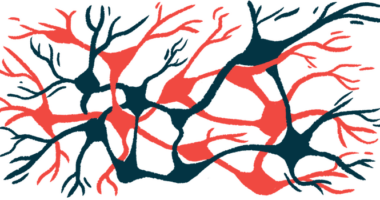Blood-brain Barrier Signaling Found to Help Regulate Nerve Activity
Scientists investigate key pathway called Delta/Notch in fruit flies

The activity of a molecular signaling pathway called Delta/Notch in cells of the blood-brain barrier is important for regulating the electrical function of nerve cells, according to a new study using fruit flies.
The research, scientists say, could have implications for understanding neurodegenerative diseases like Parkinson’s, which are often characterized by dysfunction of the blood-brain barrier that helps protect brain cells.
“We are finding that the [blood-brain] barrier is not just a protective check but also a source of regulation,” Pejmun Haghighi, PhD, a professor at Buck Institute and co-author of the study, said in a press release.
“It can cause problems rather than simply being a byproduct of neurodegeneration. We are learning now that there is definitely a two-way street,” Haghighi said.
The study, “Delta/Notch signaling in glia maintains motor nerve barrier function and synaptic transmission by controlling matrix metalloproteinase expression,” was published in PNAS.
As the name suggests, the blood-brain barrier, or BBB, acts like a cellular wall that prevents certain substances from blood from passing into the brain — this helps protect delicate brain cells from infection, and keep conditions just right for neurological functioning. Beyond this basic function, however, little is known about the BBB’s role in health and disease.
“What we know currently about the blood-brain barrier is mostly that we don’t know much beyond the basics,” Haghighi said.
Investigating cells in the blood-brain barrier
Here, scientists initially set out to explore the molecular signaling mechanisms that regulate levels of a protein called metalloproteinase 1 (MMP1). This enzyme plays important roles in shaping the extracellular matrix, or ECM, the network of proteins and other molecules that helps to hold cells in place in bodily tissues. The ECM also is an important mediator of interactions between nerve cells and support cells called glia.
In a series of genetic screens using fruit flies, the scientists found that reducing the activity of Delta/Notch signaling in a specific subset of glial cells led to an increase in MMP1 levels. This subset of glial cells, called subperineurial glia or SPG, forms a major component of the fly equivalent of the BBB.
“We weren’t planning on studying Notch, but we found it was the main player in the maintenance of the blood-brain barrier,” Haghighi said.
Results of further experiments specifically indicated that, under normal circumstances, Delta protein on one glial cell would bind to Notch protein on a glial cell — either the same cell or a neighboring cell. This diminishes the activity of a protein called JNK that is involved in MMP1 production, ultimately leading to a reduction of MMP1 levels. Thus, when Delta/Notch signaling was disrupted in SPG cells, MMP1 levels increased.
These results “indicate that Mmp1 expression is under constitutive inhibitory pressure provided by Delta/Notch signaling in SPG cells,” the researchers wrote.
Additional experiments in which the flies were injected with fluorescent dyes illustrated that disruption of Delta/Notch or overexpression of MMP1 levels could disrupt the typical “barrier” function of SPG cells, with dye leaking where it normally would not.
“We speculate that the Delta/Notch signaling role in maintaining barrier function … may be part of a fundamental and conserved mechanism,” the researchers concluded, adding that their work “opens up a potential new avenue for novel therapeutic targets aimed at countering disease-induced damage in barrier function in the nervous system.”
Notably, these changes were accompanied by a marked decrease in the strength of electrical signals sent by certain nerve cells to muscles, leading to a roughly 70% decrease in the speed of the flies’ muscle contractions.
“We can’t say what is cause and what is effect yet, but we can say that it is beyond just a correlation that some patients have breakdown of blood-brain barrier: it is an important defect associated with neurodegeneration,” Haghighi said.
Overall, the team said, little is known about these signaling pathways in humans. However, mutations in a Notch gene called Notch3 have been linked with health conditions that cause the breakdown of the BBB, they noted.
“We are hoping that we can work backwards to understand overall what the relationship is between the blood-brain barrier and neurodegenerative diseases,” Haghighi said. “We are exploring all these signaling pathways to see if we can translate our findings from larval [fruit fly] synaptic function to more of a universal age-dependent model of neurodegeneration.”







